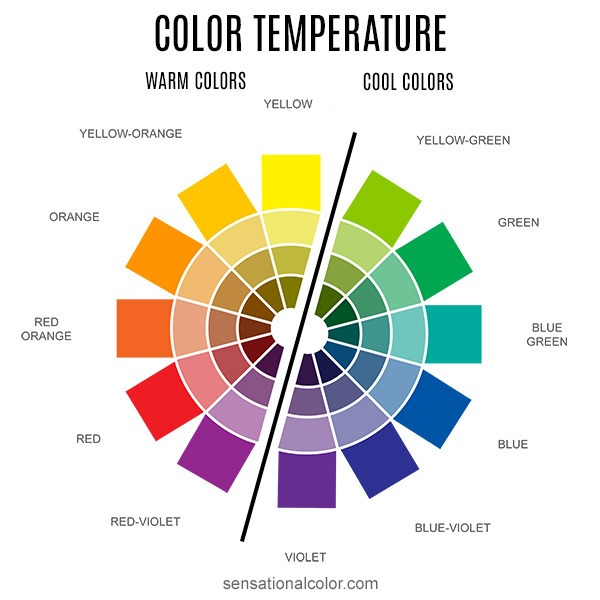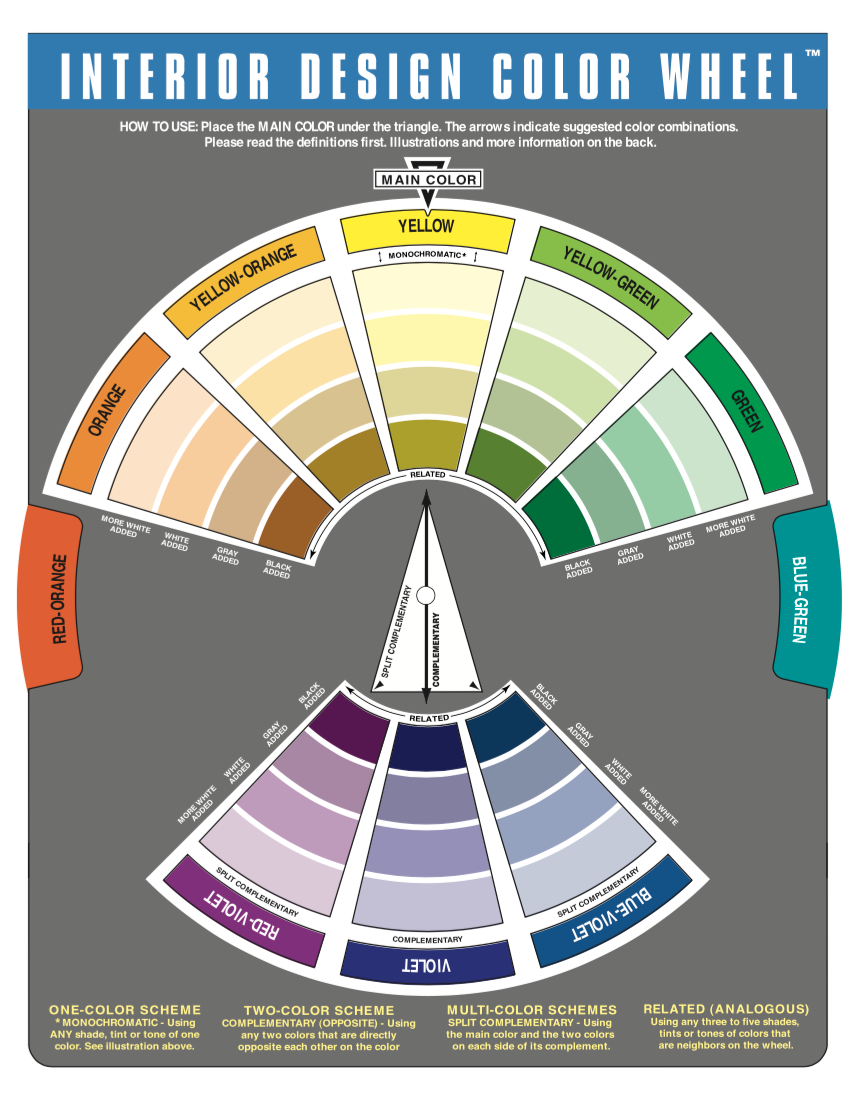Table Of Content

Test your colors, adjust your balances, and don’t be afraid to make changes until you find the perfect fit. Remember, the beauty of interior design lies in its flexibility. Whether you opt for a complementary, monochromatic, analogous, or split-complementary scheme, the key is to choose what resonates with you and the mood you want to create in your space. Don’t be afraid to experiment, have fun with it, and most importantly, let your unique style shine through!
Task lighting vs ambient lighting: What is the difference?
This mix creates a colour palette with strong contrasts and well-balanced hues. These bright colour choices are ideal for living rooms since they radiate a cheerful, invigorating feel. To increase contrast or decrease the brightness, use your three colours in a variety of hues and tints. The true magic happens when you start applying it to your own space. Choose a room in your home, pick a color scheme, and start experimenting.
Color Palette Generators for Interior Design Color Schemes
You may even be surprised, but it is effortless to understand the principle of its construction. 'Cool colours tend to be characterised by blue undertones, while warm colours have reddish undertones. These undertones are important since they're fundamental to the perception of colour and the specific palette it will work with. 'Split-complementary colours are a variation of the complementary colour scheme.
Split Complementary Colors
For example, you can use it to find complementary colors, analogous colors, or split-complementary colors for a harmonious design. Next up, we have the analogous color scheme, which involves using colors that sit side by side on the color wheel. This scheme creates a vibrant yet harmonious look, perfect for those who love color but prefer a more unified feel. Picture a living room with a sunny yellow wall, a soft peach sofa, and throw pillows in a warm coral.
How To Choose The Right Paint Color For Your Home, According To An Interior Design Expert - Forbes
How To Choose The Right Paint Color For Your Home, According To An Interior Design Expert.
Posted: Sat, 28 Jan 2023 08:00:00 GMT [source]
Below, we spoke with interior designers and experts about their favorite tried-and-true color theory principles. Harmonious colours (also known as analogous colours) sit next to each other on the colour wheel. They are the most widely used in interior design, and it’s easy to see why. Choosing adjacent colours is a simple way of creating a harmonious scheme that’s easy to live with. A color scheme in interior design is essentially a framework for choosing your specific color palette. When it comes to home design, understanding color theory helps with color harmonization.

What’s the difference between hue, tint and shade?
Here, decorating with blue on the chest of drawers makes a sophisticated backdrop to the lighter tinted powder blues of the upholstery, while the teal bowl adds an additional layer of color. This is a great combination for living room color ideas that you want to feel calming. David Levine has offered architectural and interior design to discerning clients throughout Southern California. David Levine showcases the best of Italian and European design in his showroom on La Cienega Boulevard.
Are gray interiors really out of style? Interior designers weigh in on how to use this cool shade in 2024 - Homes & Gardens
Are gray interiors really out of style? Interior designers weigh in on how to use this cool shade in 2024.
Posted: Fri, 05 Jan 2024 08:00:00 GMT [source]
When used in interior design, cool colors can create a soothing and peaceful atmosphere, making a space feel refreshing and serene. Now that we’ve got a handle on the color wheel and the different color models, let’s dive even deeper. These are variations of colors that can dramatically affect the mood and feel of your design.Let’s start with tints. This lightens the color, often resulting in a softer, more delicate version. Picture a sky-blue wall in a nursery or a pastel pink throw pillow on a couch. These are examples of tints, and they can create a light, airy feel in a room.Next, we have shades.
A classic split complementary scheme, the addition of the deep blue shade of the headboard and the forest green walls ensure a cohesive, cosy sophistication. With over a decade of experience, Olivia has had the joy of working on a wide range of award-winning projects, including residential, retail, office, and restaurant design. Style radiates from everything she creates, making Olivia Erwin easily one of the top interior designers in LA. At Lh, we not only love beautiful things, but we also love sharing the talents that create them. So, today we are honoring a collection of top interior designers who are working in and around the LA area. Read on and discover, from Z-A this time, 50 of the top interior designers in LA.
How & Where to Use Color in Your Home: Home Color Palette + Easy Color Hacks
I paint walls in neutrals because while a wall can be painted over, such as when one accidentally chooses the wrong color, it can mean a lot of extra work. I prefer to choose neutral-colored furniture too so there’s a neutral base to work with when I want to change things up, as I inevitably do. But if you want more of a soothing space without jarring pops of color, stick with a monochromatic color scheme (particularly one with plenty of neutrals).
The other two colors are opposites of the base color in the wheel. This combination of colors offers a contract without the intensity of complementary colors. An example of split complementary is blue, yellow-orange, and red-orange.
The playfulness of the color combinations can add energy and personality to your design. Remember to balance warm colors with neutral tones or cooler colors to avoid overwhelming the space. Consider the size and natural lighting of the room when choosing warm colors, as they can make a room feel more cozy and intimate. Additionally, warm colors work well with natural materials such as wood and earthy textures, creating a harmonious and inviting ambiance. Consider incorporating secondary colors through accent pieces, such as pillows, artwork, or statement furniture.
For example, green pairs well with red, orange complements blue, and purple works harmoniously with yellow. This combination of complementary colors can create a visually striking and dynamic effect in your design. It can help you understand color relationships and choose color schemes for your rooms.
So, an orange throw pillow would create a vibrant contrast, making your blue sofa stand out even more. But if you want a more harmonious look, you could choose pillows in analogous colors, like green or purple, which are next to blue on the color wheel. In a room, it is tricky to create a balance of both warm and cool colors. Add splashes of warm colors by adding décor in darker colors such as a black vase, a rich red rug, or a combination of light and darker pillows. A monochromatic color scheme, as the name suggests, revolves around a single color.
All colors on the color wheel have an opposite complementary color, no matter if they are primary, secondary, or tertiary colors. The complementary color for green is red, the complementary color for purple is yellow, and the complementary color for orange is blue. If you look at the evenly spaced colors on the color wheel, you will find your triadic colors. All primary colors paired together is triadic, so are all secondary colors. When used together, triadic colors stand out and call attention to one another. Designing an interior using triadic colors can make a space pop and create an unexpected visual element.

No comments:
Post a Comment